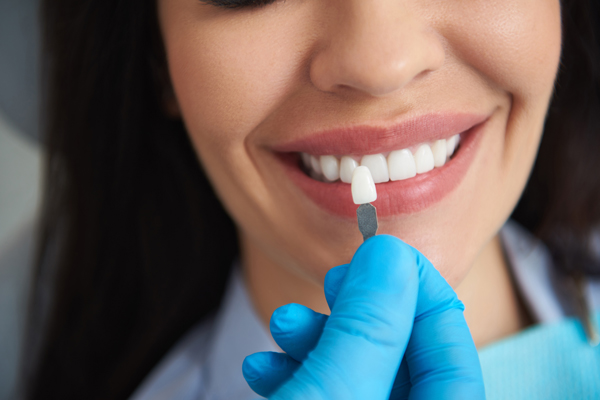The Step-By-Step Process of Getting Dental Veneers

Dental veneers are a popular solution for achieving a bright, flawless smile. A dentist uses these thin, custom-made shells to cover minor cosmetic imperfections in the smile, such as cracks, chips, or unevenness. Walking through the process of getting veneers can help patients feel more confident about transforming their smiles through this common cosmetic dental procedure.
Dental veneers: What they are and what they can fix
Dental veneers are wafer-thin porcelain or composite resin shells that a dentist bonds to the front surface of teeth to improve their appearance. In general and cosmetic dentistry, veneers correct discoloration, chips, cracks, uneven spacing, and minor misalignment. Therefore, the dentist will custom-make the veneers to match the shape, size, and color of the surrounding teeth.
A step-by-step guide to getting dental veneers
Getting dental veneers at a cosmetic or general dentistry office involves several steps spread across three appointments. Explore the key stages of the veneer process below.
Step 1: The initial consultation
The first appointment is an initial consultation to evaluate the patient’s oral health and whether dental veneers could help them achieve their smile goals. The dentist may take X-rays or conduct a thorough examination to ensure the teeth and gums are healthy. Any existing oral health issues, such as tooth decay or gum disease, must be addressed before proceeding to create a strong foundation for the veneers.
Step 2: Preparing the teeth
The second appointment starts with preparing the teeth for the dental veneers. The dentist will need to remove a small amount of tooth enamel, approximately half a millimeter, to ensure the veneers sit flush with the teeth and do not look bulky. Most patients find this process relatively painless, but local anesthesia and numbing gels are also options.
Step 3: Taking impressions and choosing the right shade
The second appointment starts with preparing the teeth for the dental veneers. The dentist will need to remove a small amount of tooth enamel, approximately half a millimeter, to ensure the veneers sit right and do not look bulky. Most patients find this process relatively painless, but local anesthesia and numbing gels are also options.
Step 4: Placing temporary veneers
In some cases, the second appointment will also involve the placement of temporary dental veneers while a dental lab prepares the permanent veneers. The point is to protect the prepared teeth and allow patients to experience how the final results might look and feel. Note that temporary veneers are made from a less durable material and are designed to be worn only for a short time.
Step 5: Bonding the permanent veneers
Once the custom dental veneers are ready, the patient will return for a final appointment to have them placed, or bonded to the teeth. This process begins with the dentist cleaning and etching the teeth to create a rough surface for better adhesion. They will place the veneers using dental cement and then secure them with a special curing light. Finally, they will check the bite and make any necessary refinements so that the veneers feel comfortable and function well.
Learn more about dental veneers
Dental veneers can create a radiant, confident smile. Understanding the step-by-step placement process can help patients feel more comfortable and informed about what to expect. Therefore, consulting a cosmetic or general dentistry team is the first step toward achieving the desired results—contact our East Windsor office today for an appointment.
Request an appointment here: https://moderndentalnj.com or call Modern Dental Care at (609) 454-0093 for an appointment in our East Windsor office.
Check out what others are saying about our dental services on Yelp: Dental Veneers in East Windsor, NJ.
Related Posts
Seeing a cosmetic dentist can give you the information you need if you want to have a dental procedure. A consultation with your dentist is a chance for you to ask questions about things that are relevant to your dental treatment. This dental care provider can help you make informed decisions about your aesthetic dental…
Dental contouring reshapes the teeth and improves one’s smile. A cosmetic dentist can contour chipped, cracked, and uneven teeth. Contouring can be used to fix misaligned teeth as well. Here are the basics of dental contouring, when to get it, how it works, and what to expect during the procedure.Dental contouring — also known as…
Chipping a tooth can come as an unwelcome surprise. Fortunately, cosmetic dentists have many ways to repair broken teeth. If you have never chipped a tooth before, chances are you have questions about when to visit the dentist, treatment options, and more. Let us dive into the most frequently asked questions about chipped teeth.A badly…
During a smile makeover, a cosmetic dentist typically performs two or more procedures as part of an overall plan to improve a smile's appearance. Therefore, the definition of a smile makeover can be very broad and customizable. Smile makeovers can even be as simple as one procedure, such as dental veneers. A smile makeover plan…
